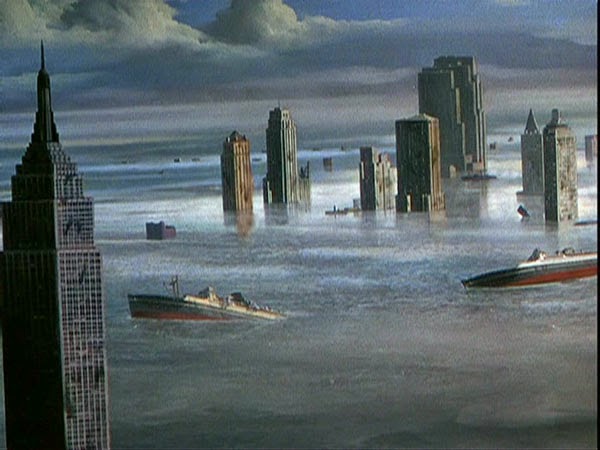A star called Bellus is on a collision course with Earth. Orbiting that star is a planet named Zyra and upon confirming the awful truth of the collision course, Dr Hendron (Larry Keating) decides there is only one solution. They must build a ship to fly some members of the human race to Zyra before the destruction of Earth. A rich wheel-chair bound man called Stanton (John Hoyt) puts the money forward for Hendron's plans in return for a space on the ship and so the deal is done and Hendron and Dr Tony Drake (Peter Hanson) begin to plan their species survival. The ship, having only enough room for necessities and forty people or so, is under construction and the workers enter a lottery to see who will be allowed on the ship with the already chosen few including a morally conflicted pilot named David Randall (Richard Derr) who does not believe he has earned a spot on the flight. Bellus passes close to Earth causing natural disasters to happen over the whole Earth and the race to finish the ship is on.
 |
| Water a way for New York to go... |
Rudolph Maté's disaster film rattles along with a focus on his characters leading up to the end of the world rather than the Earth's destruction. Keating's Hendron is focused on carrying on human kind after Bellus hits Earth, and perfectly so. He is powerful, stern, and overwhelmingly caring at the same time. Next to Hoyt's angry Stanton, he seems like a saint, if not a little obsessive. He is the star of the film. Much like the rest of the film, the acting style from the other performers is a bit dated. Women lacking much personality, men arguing quickly and with little reasoning. Perhaps it is more a script based error, or the 89 minute runtime cutting out important character thought processes, but the film occasionally seems to jump wildly from one conclusion to another. However, there are some charming scenes with wonderful sections of dialogue, nearly all of them involving Keating's arguments with Stanton.
 |
| The new Thorpe Park ride is out of this world. |
Whilst the film is dated, it never stops being enjoyable. There is a glorious feeling that comes from the merry optimism from a pre-moon landing America. Spaceships can be shot into space off of a roller coaster track and stars will not burn the atmosphere of Earth until very very close. As Bellus becomes close to Earth, the audience are treated to a montage of disasters (mostly pinched from other films) that show the oncoming end off the world and it is the only scene that really shows any destruction or effect of the star's passing, but it does it effectively. Waves ripping through a New York street, fires over an oil field, the normal. And in the closing stages of the film, a more powerful message becomes evident. The men who have not been selected for the flight riot and the question is raised: who decides who lives and dies? How would we, the audience, react? A minor moral underlying to an otherwise straight forward plot.
Best Bit? The montage of the disasters followed by a the touching rescue of a boy stuck on a roof in a flood (and the dishing out of supplies to survivors, though they won't survive for long, will they?)
No comments:
Post a Comment